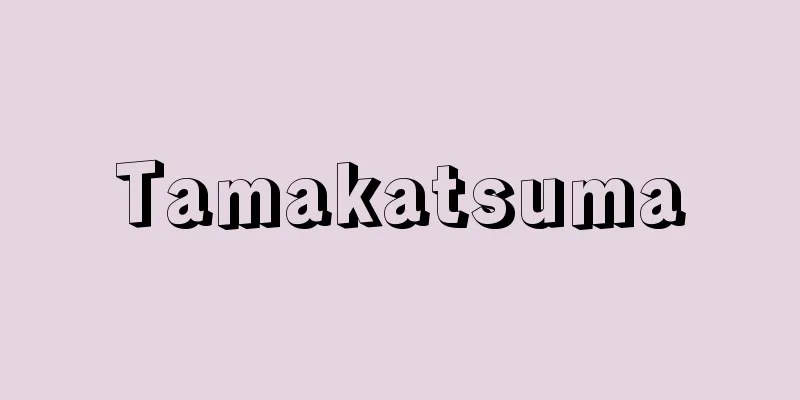Oka Domain

|
During the Edo period, this domain ruled the Taketa region of Bungo Province (Taketa City, Oita Prefecture). It was an outside feudal lord with a stipend of 70,440 koku. The year after Otomo Yoshimune expelled Bungo Province, in 1594 (Bunroku 3), Nakagawa Hidenari entered the domain and established a castle in Okamura. The castle town was located in Takedamura. After Hidenari, Hisamori, Hisaki, Hisatsune, Hisamichi, Hisatada, Hisayoshi, Hisasada, Hisamochi, Hisataka, Hisanori, Hisaaki, and Hisanari ruled the domain for 13 generations for 280 years, until the Meiji Restoration. In July 1871 (Meiji 4), it was incorporated into Oka Prefecture, and in November of the same year, it was incorporated into Oita Prefecture. The domain spanned three counties: Ono, Naori, and Oita. It was centered on field crops in the hilly areas, with soybeans being its specialty. In addition, the Obira and Kiura mines in the domain produced silver, tin, lead, and other metals. From 1637 (Kan'ei 14), the domain established a coin mint in the old town of Takeda, a castle town, with permission from the shogunate. At the end of the 18th century, in order to overcome financial difficulties, a "new law" was enacted, aimed at actively increasing taxes, led by Yokoyama Jinsuke, a member of the private house. However, in December 1811 (Bunka 8), the domain's people demanded the complete abolition of the tax and staged an uprising that included destruction and destruction. Over the next year, this spread throughout Bungo and Buzen, becoming the Oka Domain Bunka Uprising, a classic example of a "wide-area struggle." In the field of education, Hojindo was opened in 1726 (Kyoho 11), which was expanded to become Yugakukan in 1776 (An'ei 5), and later Keibukan was established as a military school. These two schools were merged to become Shudokan in 1868 (Meiji 1). Karahashi Sesai (Kimizan) was invited to become a professor at Hakusaikan, a medical school established in 1787 (Tenmei 7), and many talented people came to study under him, including Tanomura Chikuden, the founder of Japanese Nanga painting. [Kanzo Toyoda] Source: Shogakukan Encyclopedia Nipponica About Encyclopedia Nipponica Information | Legend |
|
江戸時代、豊後(ぶんご)国竹田(大分県竹田市)地方を領有した藩。外様(とざま)大名。7万440石。大友吉統(よしむね)の豊後除国の翌年、1594年(文禄3)に中川秀成(ひでなり)が入封し、岡村に城館を置いたことにより成立。城下は竹田村に配置。秀成のあと久盛、久清、久恒(ひさつね)、久通(ひさみち)、久忠、久慶(ひさよし)、久貞、久持、久貴(ひさたか)、久教(ひさのり)、久昭、久成と13代280年にわたり在封、明治維新に至る。1871年(明治4)7月岡県、同年11月大分県に編入。領地は大野、直入(なおり)、大分の3郡にまたがり、丘陵地の畑作中心で大豆が特産品。また、領内尾平(おびら)、木浦(きうら)両鉱山は銀、錫(すず)、鉛などを産出し、1637年(寛永14)から2年間城下町竹田の古(ふる)町に幕府の許可により銭座を設置している。18世紀末には、財政窮乏打開のために御勝手方横山甚助(じんすけ)を中心に積極的増税を目ざす「新法」が実施された。しかし、1811年(文化8)12月、領民はその全廃を求め、打毀(うちこわし)を伴う一揆(いっき)を展開。これが翌年にかけて豊後一円、豊前(ぶぜん)にまで波及し「広域闘争」の典型といわれる岡藩文化大一揆となった。文教面では、1726年(享保11)に輔仁(ほじん)堂を開設、それが1776年(安永5)には拡張され由学館となり、のち武館としての経武館も設立された。この両館は1868年(明治1)に統合され修道館(しゅうどうかん)となった。1787年(天明7)に設置された医学校博済館の教授として唐橋(からはし)世済(君山)が招かれ、その門下に日本南画の開祖田能村竹田(たのむらちくでん)など、多くの人材が輩出した。 [豊田寛三] 出典 小学館 日本大百科全書(ニッポニカ)日本大百科全書(ニッポニカ)について 情報 | 凡例 |
Recommend
Demon's Castle
(Soja City, Okayama Prefecture) A tourist attracti...
Workers' Asset Formation Promotion Act
…The system of West Germany's workers' we...
Ford, Harrison
Born July 13, 1942 in Chicago, Illinois. American ...
Critical philosophy (English: kritische Philosophie) German
It is usually used as a term to refer to Kant'...
Overdraft - Overdraft
Overdraft is a type of bank loan in which a bank a...
Enchilada - Enchilada
...Also, the traditional way is to tear off the t...
Davis, Jefferson
Born June 3, 1808 in Kentucky, Christian [Died] De...
Contract - Kaisou
1007‐72 A Chinese Zen monk from the early Northern...
Ranbyoushi - Ranbyoushi
〘Noun〙① A style of dance such as Shirabyoshi. A da...
Kasper's Law
...This phenomenon is called birth in a coffin. O...
Blood
Blood is the red fluid tissue that flows through ...
Esoteric science - Inpigaku
...The word derives from the Latin occultum (mean...
Yang Jian - Yokan
1141‐1225 A Chinese thinker from the Southern Song...
Angora (place name) (English spelling) Angora
…It is located at almost the same latitude as Mor...
Silk screen printing - Silk screen insatsu (English spelling) silk-screen printing
A type of stencil printing. It is also called silk...


![Izumozaki [town] - Izumozaki](/upload/images/67caea354c3e3.webp)






